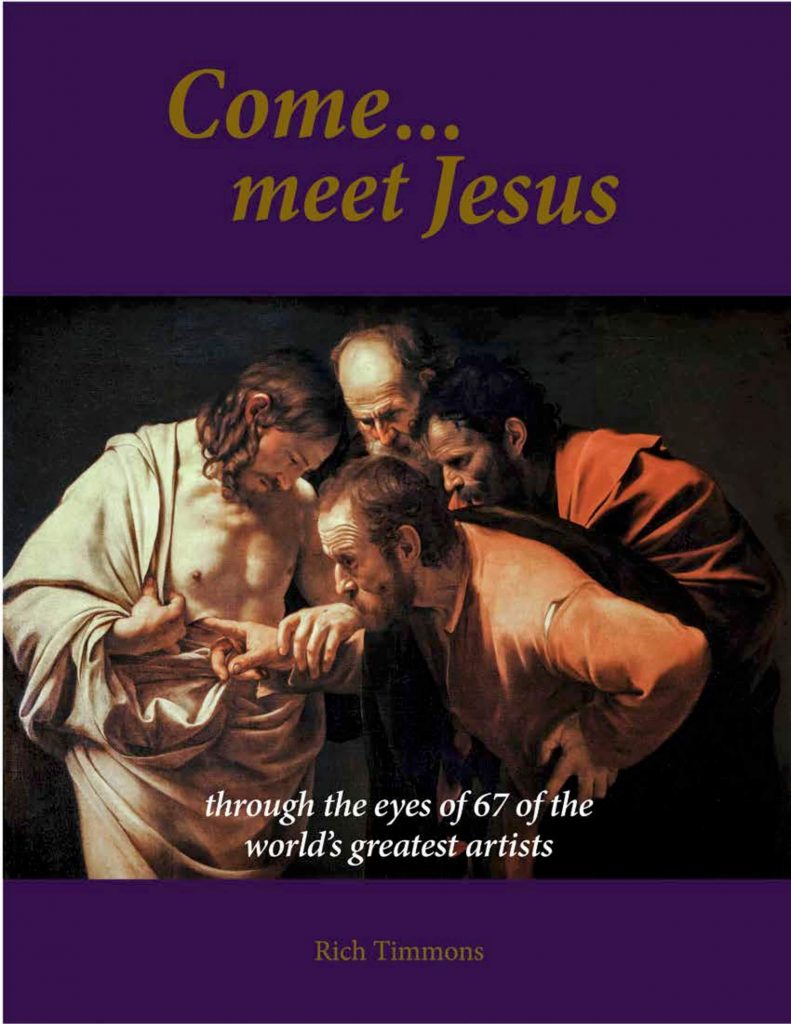If Christ has not been raised, your faith is vain; you are still in your sins. Then they also who are fallen asleep in Christ have perished.If we have only hoped in Christ in this life, we are of all men most pitiable.But now Christ has been raised from the dead. He became the first fruit of those who are asleep.For since death came by man, the resurrection of the dead also came by man.For as in Adam all die, so also in Christ all will be made alive.
1 Corinthians 15:17-22
This is a victorious Christ if there ever was one! Grunewald painted this as one panel of the Isenheim Altarpiece. As an altarpiece, it had many panels and doors that would be opened in various configurations, so this scene would not be visible all the time, only on specific holy days. The main panel, the crucifixion scene, was always visible. That crucifixion, though a fascinating and meaningful piece of art, really is one of the most grotesque depictions of the crucifixion in art history. The Christ in Grunewald’s crucifixion is twisted, agonized, his skin greenish and covered in ugly sores and wounds as it was meant to help the suffering ones at the Isenheim hospital find comfort in Christ as a fellow sufferer. It hurts to look at. It is only fitting that this resurrection then is the complete opposite!
This Jesus, in a healed and glorious body, is all grace and power with creamy smooth skin and it literally looks soft to the touch. The subtle rainbow of colors painted into the layers, especially the blue and purple on His torso that vibrates against the orange and yellow in the cloth, echo the aureole of glory surrounding Him and makes His body radiate with life. Even His wounds are glowing, the very things of pain, humiliation, and death become jewels worn proudly, displayed as reminders of His love for us and His life-giving work of salvation. He is literally bursting out of the tomb like a fireball, sending terrified guards crashing to the ground. No one really knows what it looked like as Jesus stepped out of the tomb. In the gospel narratives, the angel who rolls the stone away is described, but Christ is just mentioned as being absent from the tomb. Grunewald’s painting here is all drama and displays life and power. Perhaps in actuality, He left the tomb miraculously before the angel rolled away the stone to reveal it empty? Or maybe He just stepped out, in a very ordinary, non-glowy way? But, as a Gothic artist, tough he lived during the High Renaissance, Grunewald was not really concerned with what Christ’s exit from the tomb looked like, but what it meant – the spiritual truths behind the physical events. Christ’s resurrection means, first of all, that He is God, and so the composition here portrays Him as such; it is more reminiscent of a transfiguration or ascension painting, two instances where Christ’s divinity is on display more than His humanity. Christ’s resurrection also means He is victorious over death, and not just for Himself, but for us too. This panel, in a hospital where people suffered and died every day, was a reminder that one day, they would suffer no more. Their body might break down here on earth, but one day they will get a new body, clean, whole, fresh, and alive… forever! That is Good News!


